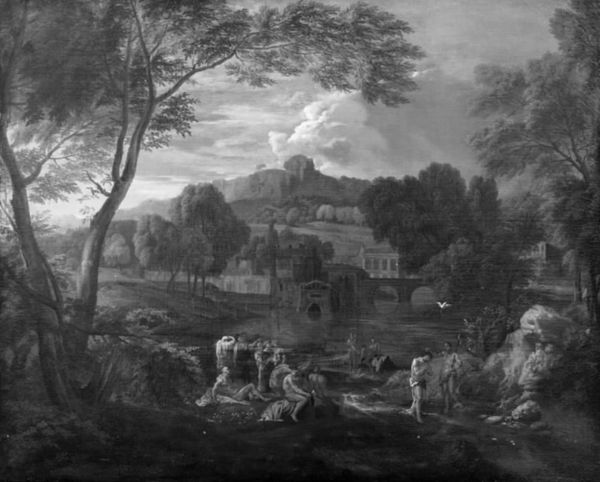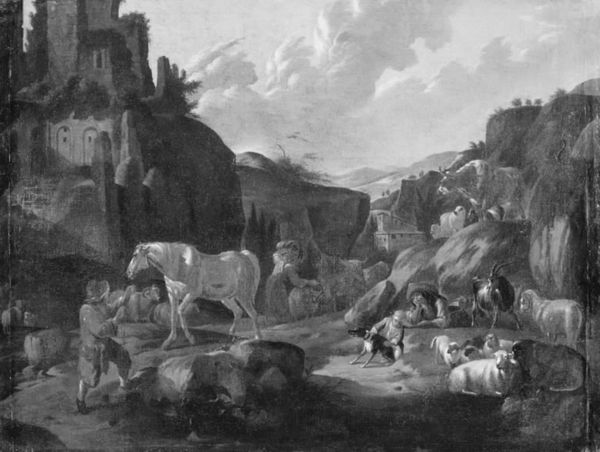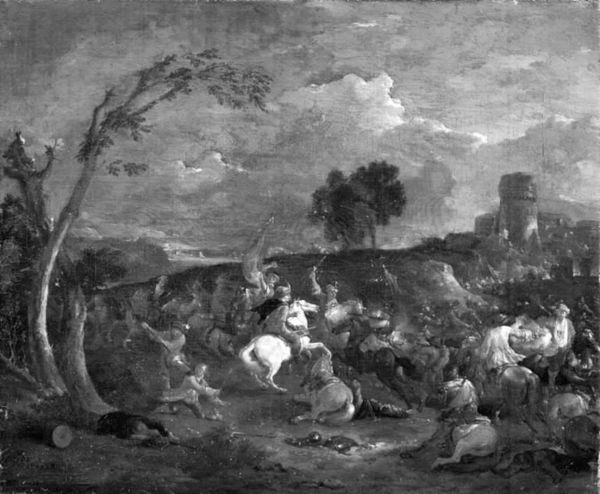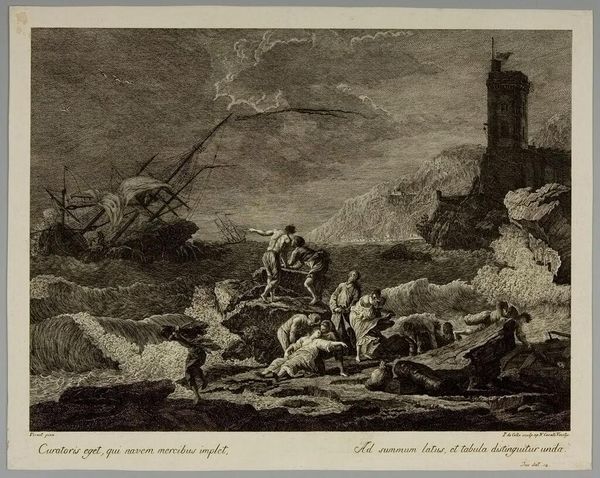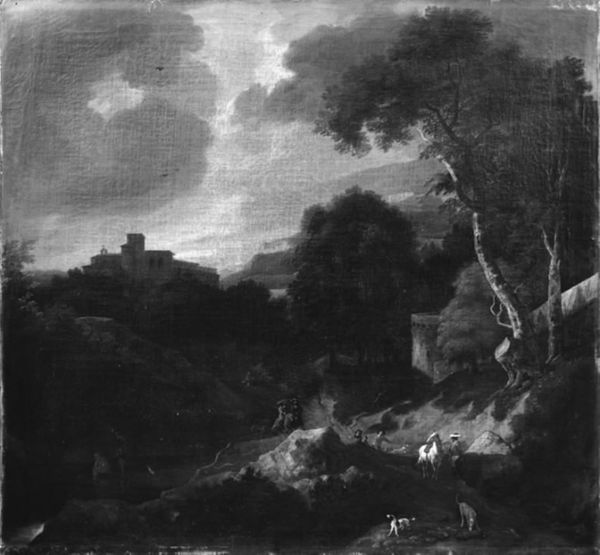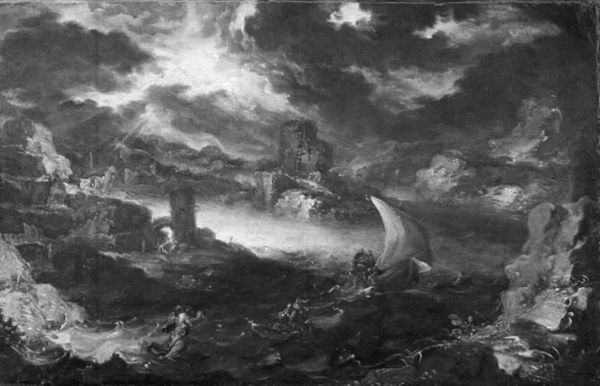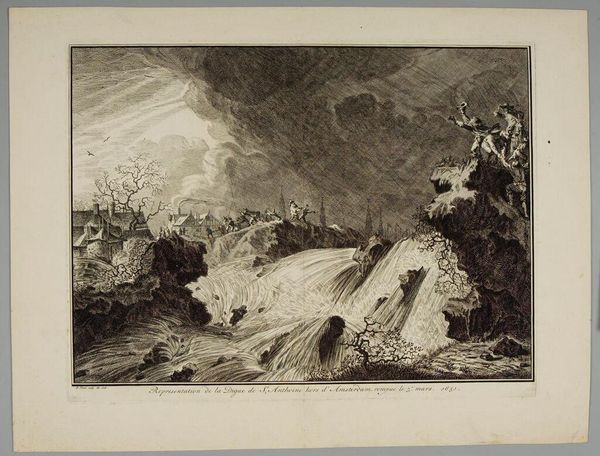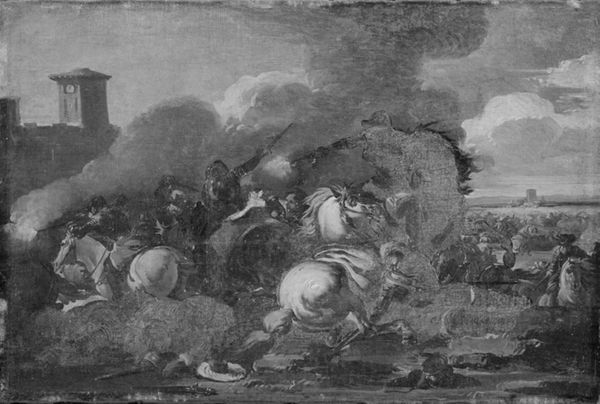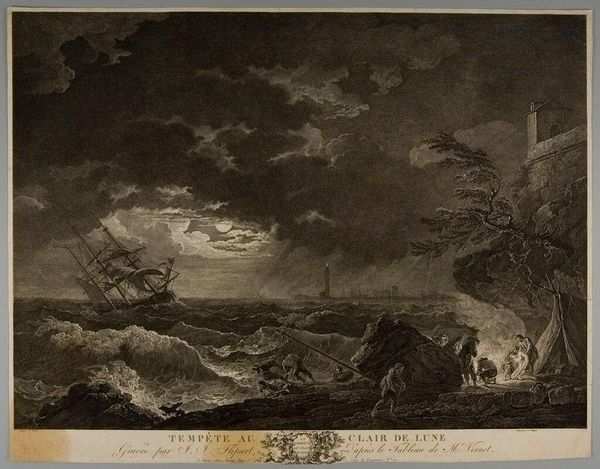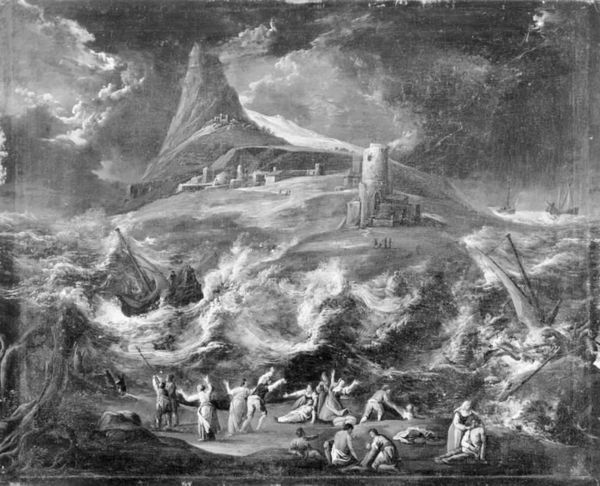
canvas
#
amateur sketch
#
rough brush stroke
#
charcoal drawing
#
possibly oil pastel
#
b w
#
charcoal art
#
canvas
#
acrylic on canvas
#
black and white
#
charcoal
#
graphite
Dimensions: 42 cm (height) x 53.5 cm (width) (Netto)
Curator: Oh, goodness, it’s like the world’s about to end, but the sheep are just…having a snack. Editor: Indeed. This piece is attributed to Michiel Carree, likely executed sometime between 1672 and 1727. It's titled "Cattle Piece," currently residing here at the SMK, done in what appears to be charcoal and graphite on canvas. Curator: Right? I mean, the sky is churning with a storm, those dark looming clouds… but the sheep are calmly grazing, like nothing's amiss. There's something deeply comforting in that quietude, in the face of chaos. Or maybe I’m just projecting my anxieties onto some oblivious livestock. Editor: Or perhaps Carree intended to underscore that very human tendency? These pastoral scenes were hardly devoid of societal commentary. While seemingly simple, livestock paintings could reflect a patron's wealth and status, showcasing productive agricultural lands. Notice the deliberate placement; are those specific breeds particularly valued, reinforcing societal hierarchies of the era? Curator: Oh, hadn't thought about it that way! I was just taken by the mood—a dramatic sky paired with those wonderfully fluffy sheep. Look at those rough brushstrokes, it almost has the quality of an amateur sketch, maybe preliminary, but I love its immediacy. Makes you feel the urgency in capturing a fleeting moment. Editor: Urgency perhaps prompted by market demands. Remember, the Dutch Golden Age thrived on trade and a burgeoning merchant class, creating a robust art market. Scenes of daily life, including these animal studies, became incredibly popular. Were artists like Carree also producing for a broader audience, reflecting changing tastes and societal values, not just aristocratic commissions? Curator: Good point! Thinking about the broader audience takes away that preassured, almost melancholic mood and gives it a wider frame. Makes you realize it may not be as personal, as just broadly human as I felt it was at first glance. But in its human, or, animalism, is a value regardless of that perspective. Editor: Precisely! This intersection, how patronage, economic systems, and artistic vision intermingle, shapes our very understanding of these "simple" landscapes and livestock studies. Curator: It all starts with sheep munching grass, I guess! Editor: Indeed. A reminder that behind even the simplest image lies a wealth of historical, economic, and artistic currents.
Comments
No comments
Be the first to comment and join the conversation on the ultimate creative platform.

